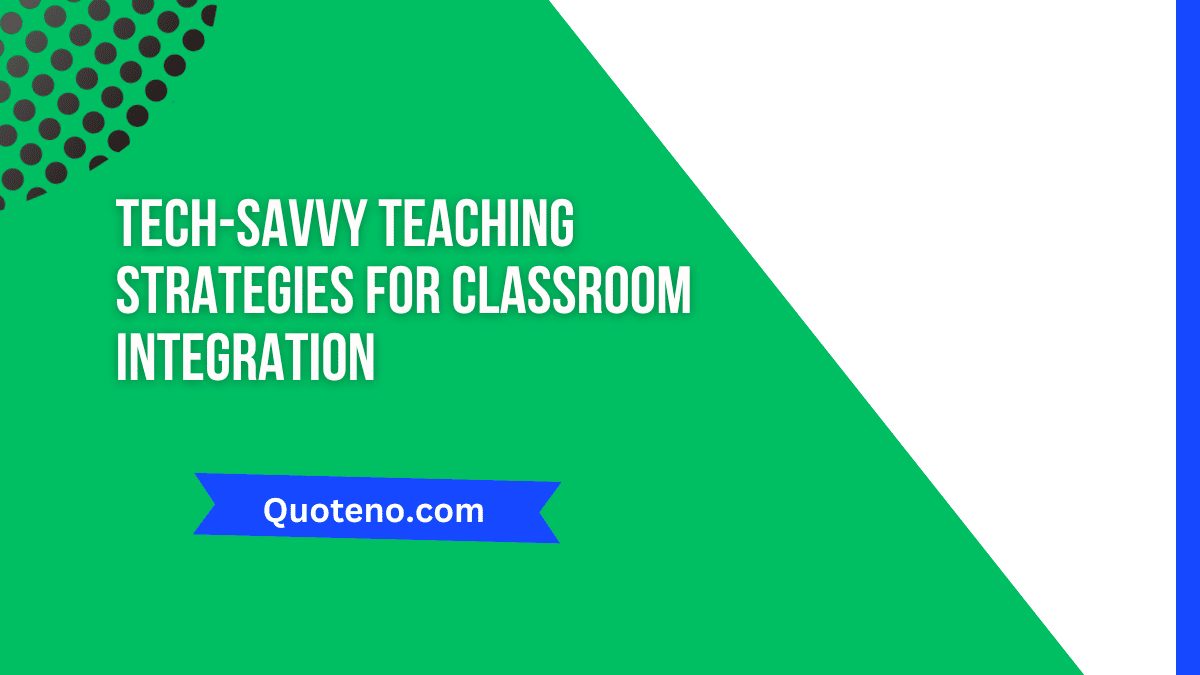Integrating technology into the classroom has emerged as a transformative endeavor in today’s educational landscape. This integration presents an opportunity to enhance the learning experience, catering to the digital-native generation.
Empowering educators to effectively utilize a spectrum of digital tools, tech-savvy teaching fosters dynamic and interactive learning environments. Embracing this approach facilitates personalized instruction, real-time feedback, and collaborative opportunities, laying the foundation for a future-ready generation adept at navigating the digital realm.
Table of Contents
Identifying Suitable Tech Tools
Computer science tools encompass various applications and software that align with the curriculum, fostering a deeper understanding of the subject. These tools range from programming platforms to simulation software, enabling interactive and engaging learning experiences. Evaluate the specific needs of your students and curriculum to select tools that enhance learning and encourage exploration.
Integration of these tools encourages critical thinking and problem-solving skills, preparing students for the demands of the digital era. Stay informed about the latest advancements in computer science to continually enhance the learning journey.
Empowering Educators through Professional Development
Professional development is pivotal in equipping educators with the expertise to integrate technology into their teaching methods. Embrace training programs and workshops that focus on tools for computer science and advancements in educational technology. These initiatives provide valuable insights and hands-on experience, instilling confidence and competence among educators.
By continuously enhancing their knowledge and skills, educators can harness the potential of these tools to create dynamic and engaging learning environments. Stay proactive in seeking professional development opportunities to remain at the forefront of educational innovation and effectively guide the digital transformation in the classroom.
Customizing Learning and Differentiating Instruction
Tools for computer science offer a plethora of options to customize learning experiences, catering to various learning paces and styles. Through adaptive learning platforms and personalized apps, educators can create a personalized educational journey for each student, fostering a deeper understanding of the subject matter.
Utilize these tools to differentiate instruction, ensuring every student can engage with the material at their own pace and level. The ability to customize instruction enhances comprehension and cultivates a sense of empowerment and motivation among students, optimizing their overall learning outcomes.
Promoting Collaborative Learning Environments
By utilizing online platforms and interactive applications, educators can encourage students to collaborate, share ideas, and collectively solve problems. Foster an atmosphere where students can engage in meaningful discussions and projects, enhancing their critical thinking and communication skills.
Collaboration enriches the learning experience and prepares students for collaborative endeavors they will encounter in their future careers. Embrace these tools to build a sense of community and teamwork within the classroom, promoting an empowering and inclusive learning environment.
Ensuring Digital Citizenship and Safety
Imparting knowledge of digital citizenship and safety is imperative. Tools for computer science enable educators to educate students on responsible and ethical internet usage, promoting a respectful online community. Stress the value of protecting personal information and being aware of the dangers that come with using digital networks.
Educators empower students to navigate the online world securely and responsibly by instilling good digital citizenship practices. Give pupils the knowledge and abilities to spot false information, analyze online content critically, and maintain a good online reputation. This proactive approach cultivates a culture of informed and cautious digital citizens, contributing to a safer and more constructive online environment.
Evaluating and Measuring Impact
Utilize data analytics and feedback mechanisms to measure student performance, engagement levels, and the overall effectiveness of tools for computer science. Analyzing these metrics enables educators to make informed decisions, tailoring teaching methods to better suit their students.
Embrace a proactive approach to evaluation, recognizing successes and improvement areas. By continuously gauging the impact, educators can adapt and fine-tune their tech-savvy teaching strategies, ensuring the best possible outcomes for their students in the evolving digital landscape.
Conclusion
Incorporating tech-savvy teaching strategies into your classroom can be a catalyst for educational evolution. Embrace the ever-expanding landscape of technology and its potential to enrich the learning journey. Tailor your approach, experiment with diverse tech tools, and witness the engagement and empowerment of your students.
Stay updated with advancements, immerse yourself in professional development, and advocate for innovative education. Remember, the integration of technology is not just a trend; it’s a pathway to equipping the next generation with essential skills for a digitally-driven world. Embrace it, and watch your students thrive.
- 5 Must-Visit Travel Destinations to Enrich Your Knowledge of History and Culture - May 17, 2024
- 5 Services Your Small Business Needs ASAP - May 13, 2024
- Maintaining Home Integrity: The Unseen Value of Gutters - May 13, 2024

